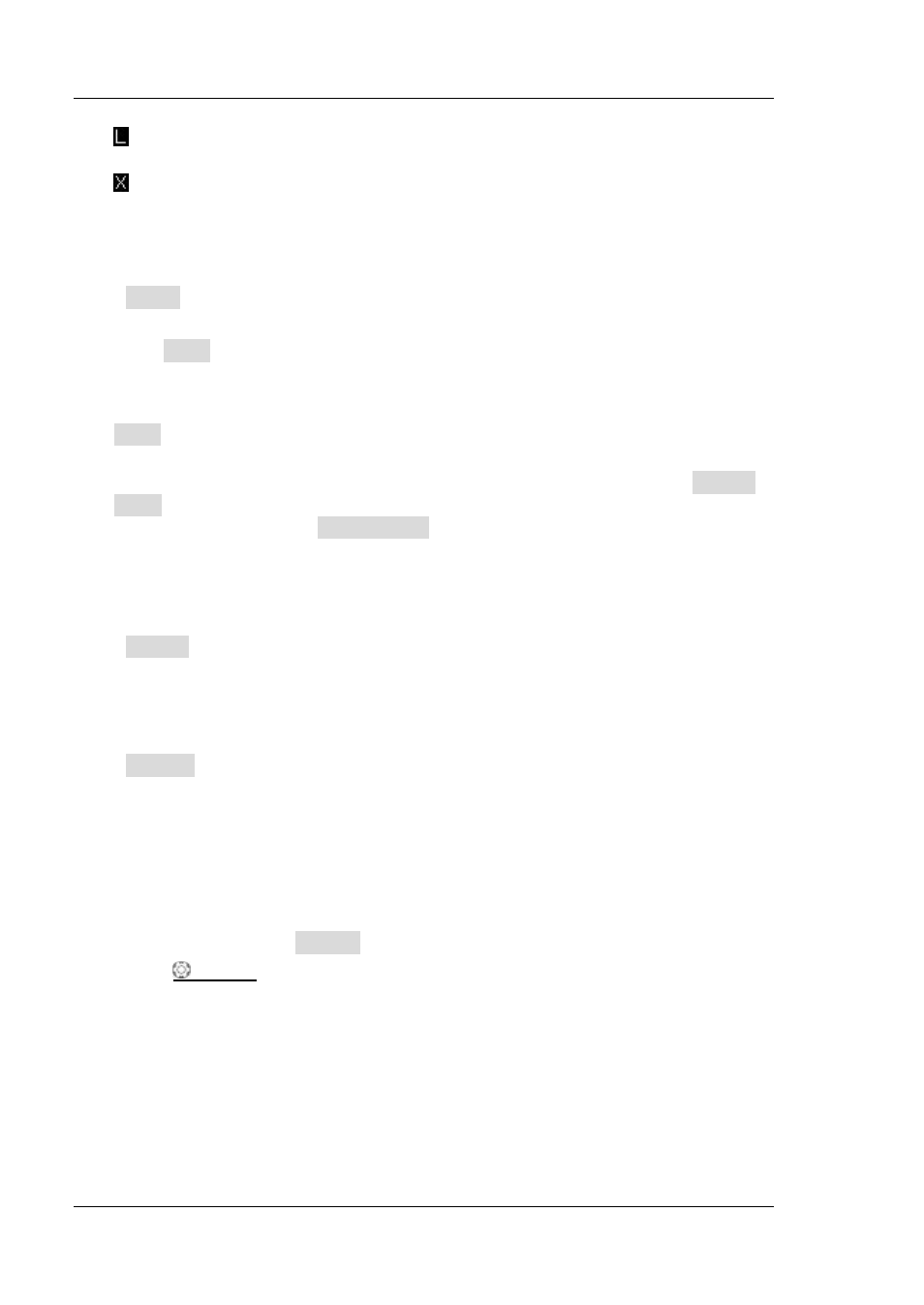RIGOL MSO/DS2000A Series User Manual
Page 120

RIGOL
Chapter 5 To Trigger the Oscilloscope
5-34
MSO2000A/DS2000A User’s Guide
: set the pattern of the channel selected to “L”, namely the voltage level is
lower than the threshold level of the channel.
: set the pattern of the channel selected to “Don’t Care”, namely this channel is
not used as a part of the pattern. When both the channels in the pattern are set
to “Don’t Care”, the oscilloscope will not trigger.
Trigger Condition:
Press When to select the desired trigger condition.
>: trigger when the duration of the pattern is greater than the preset time.
Press Time to set the duration of duration trigger and the range is from 2 ns to
4 s.
<: trigger when the duration of the pattern is lower than the preset time. Press
Time to set the duration of duration trigger and the range is from 2 ns to 4 s.
<>: trigger when the duration of the pattern is lower than the upper limit of the
preset time and greater than the lower limit of the preset time. Press Upper
Limit to set the upper limit of the duration of duration trigger and the range is
from 12 ns to 4 s. Press Lower Limit to set the lower limit of the duration of
duration trigger and the range is from 2 ns to 3.99 s.
Note:
The time lower limit must be lower than the time upper limit.
Trigger Mode:
Press Sweep to open the trigger mode list and select “Auto”, “Normal” or ”Single”.
For the details, please refer to “
Trigger Mode”. The corresponding status light of
the current trigger mode turns on.
Trigger Setting:
Press Setting to set the trigger parameters (trigger holdoff and noise rejection)
under this trigger type.
Note:
Noise rejection is grayed out and disabled automatically when the signal
source is set to any channel of D0-D15.
Trigger Level:
The trigger level of each channel needs to be set independently. For example, set the
trigger level of CH1. Press Source to open the signal source list and select CH1; use
TRIGGER LEVEL to modify the level. For the details, please refer to the
introduction of “
